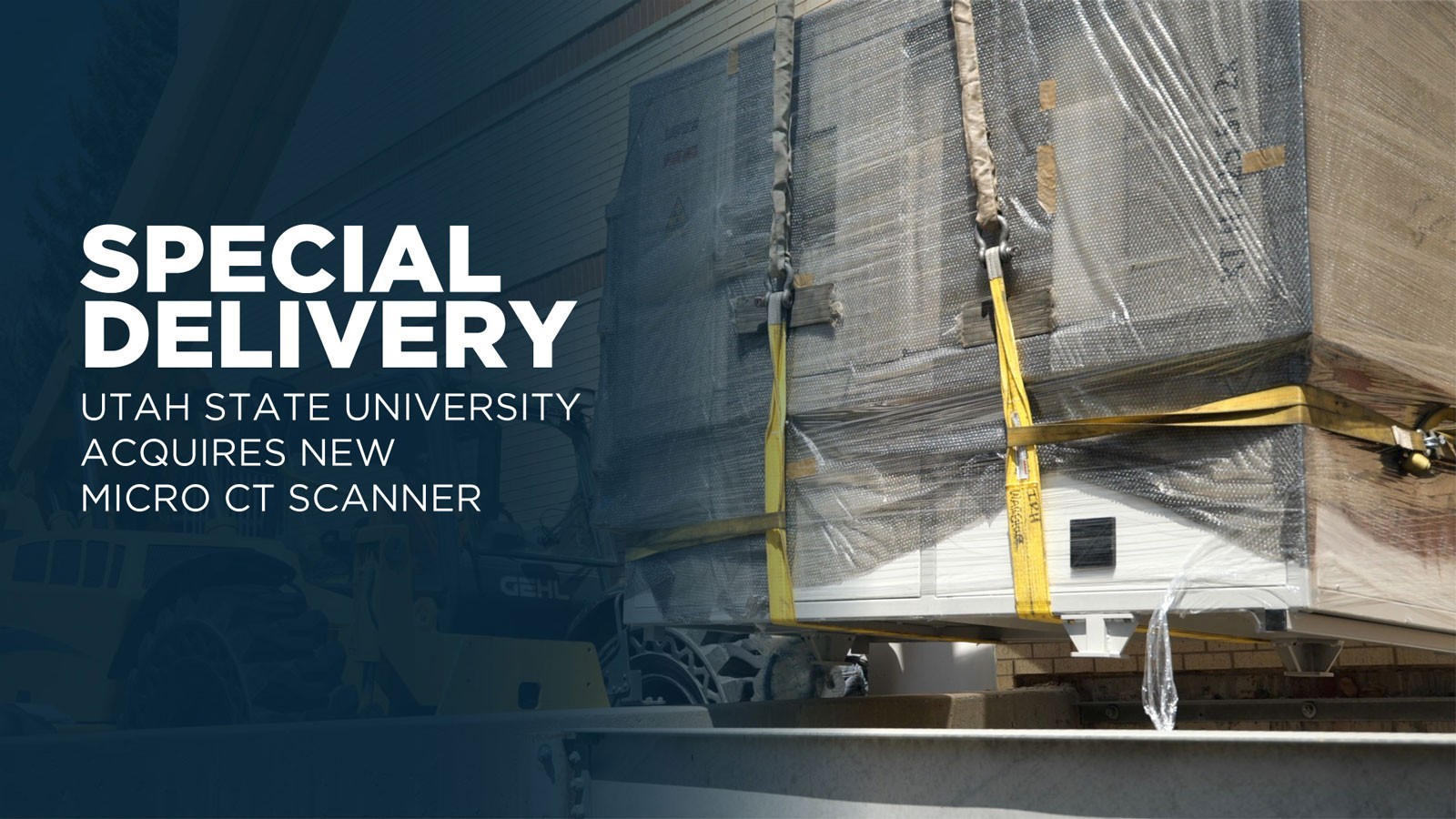A Closer Look: USU Installs New Scanner for Non-Invasive Analysis of Biological, Other Specimens
National Science Foundation, USU partners provide more than $500K for 'microCT' unit to advance research efforts
By Mary-Ann Muffoletto |
Video by Taylor Emerson, Digital Journalist, University Marketing & Communications
Conventional means of examining biological and other structures, including dissection, often destroy precious specimens. But advances in imaging technology are affording scientists the ability to get a closer, non-invasive look. Utah State University is the grateful recipient of a state-of-art 3D tomographic X-ray system that will allow scholars to elevate their research efforts by digitally dissecting delicate, irreplaceable samples without harm.
A group of Aggie scientists secured a $402,500 grant from the National Science Foundation in August 2021 to fund the acquisition of a high-resolution 3D, micro-computed tomographic X-ray system. USU’s Office of Research, along with the College of Science, the College of Agriculture and Applied Sciences, the Agricultural Experiment Station, and the departments of Biology; Animal, Dairy and Veterinary Sciences; and Geosciences, provided a 30 percent match in funding to purchase the $575,000 Nikon microCT scanner.
About 8 feet long, 7 feet tall and 4 feet wide, the nearly 5-ton instrument, manufactured in the United Kingdom, was installed in the university’s Eccles Science Learning Center May 23.
“This instrument opens a range of opportunities for USU scholars in the life sciences, as well as for researchers in geosciences, physics, engineering, art, anthropology and more,” says Al Savitzky, professor in the Department of Biology and USU Ecology Center and a principal investigator on the project.
Looking at photos of the exterior of many specimens is no substitute for examining the internal features of an animal, plant or rock, he says. And, without high-tech imaging, thoroughly examining a specimen’s structure means taking it apart — ultimately destroying the test subject.
“MicroCT technology allows for eye-popping, microscopic examination of structures, tissues and cells without damaging the object we’re looking at,” Savitzky says. “It greatly simplifies 3D analysis and preserves costly samples.”
The acquisition of the scanner is the result of a multi-year effort by Savitzky and fellow investigators Susannah French, Karen Kapheim and Molly Womack, aslo faculty members in the Department of Biology and USU Ecology Center, as well as Department of Animal, Dairy and Veterinary Sciences faculty member Jeffrey Mason.
“This is a collaborative effort that will benefit researchers throughout the university, including scholars at our statewide campuses,” Savitzky says. “The scanner’s imaging capabilities will enhance teaching and research efforts for undergraduates, graduate students, postdoctoral researchers, faculty and staff, as well as public outreach efforts.”
Current USU research efforts targeted for use of the scanner include evolutionary and developmental studies of chemical defenses in snakes and sensory systems in frogs and toads, studies of evolutionary processes and genomic mechanisms in bees, research into tissue mineralization in mammals, developmental studies of flower, fruit and seed metabolism, development of bioengineered protein materials and more.
“Use of this instrument will have a multiplicative effect across the university, as the initial cohort of researchers are able to provide increased learning and synergistic research opportunities for their students, postdoctoral researchers and colleagues,” Savitzky says.
A nearly five-ton micro-computed tomographic scanner is lowered through the mechanical access shaft on the south side of USU's Eccles Science Learning Center May 23. The instrument will enhance research opportunities throughout the university.
WRITER
Mary-Ann Muffoletto
Public Relations Specialist
College of Science
435-797-3517
maryann.muffoletto@usu.edu
CONTACT
Al Savitzky
Professor
Department of Biology and USU Ecology Center
435-797-0193
savitzky@usu.edu
ADDITIONAL RESOURCES
TOPICS
Grants 228stories STEM 163storiesComments and questions regarding this article may be directed to the contact person listed on this page.









